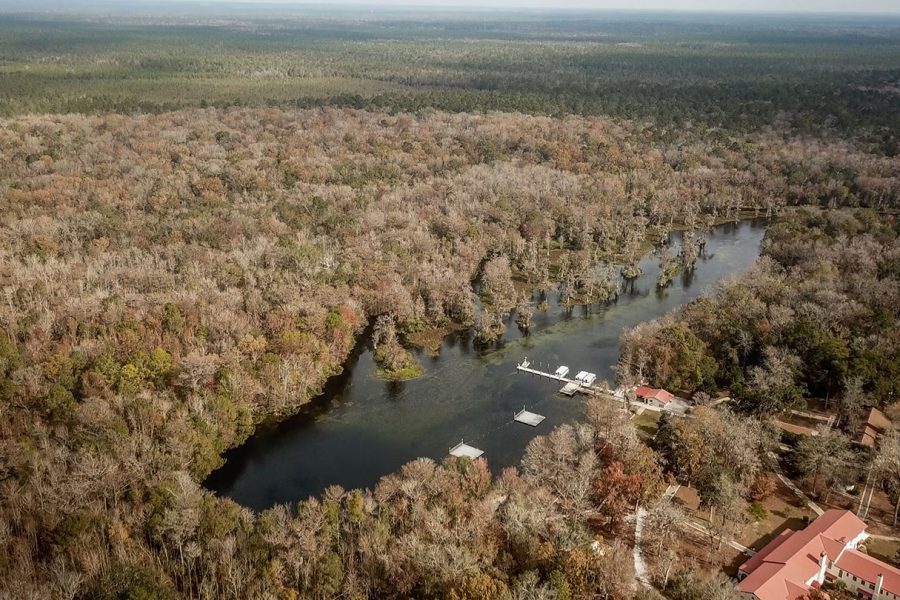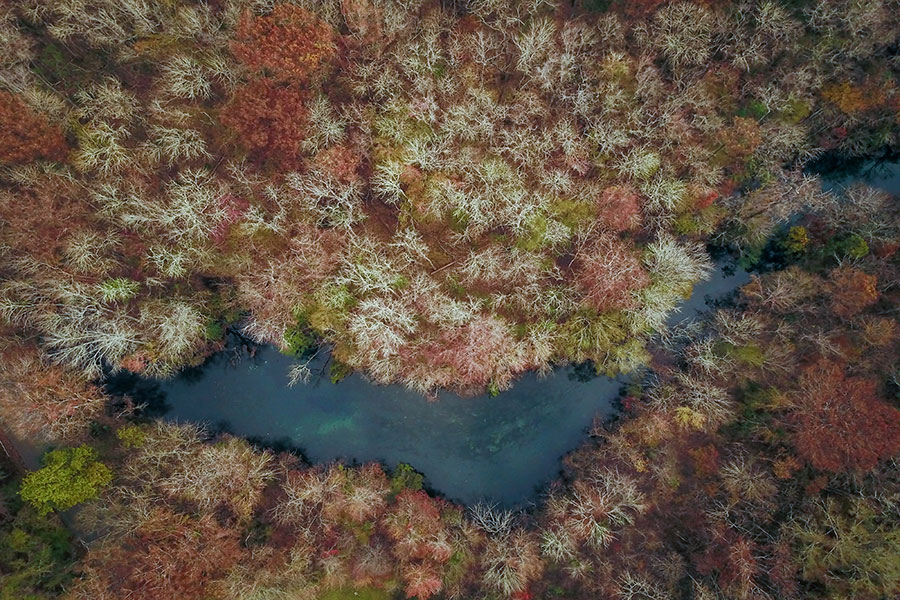
North Florida’s Wakulla Springs is experiencing an unwelcome change: Its famously crystal waters are turning brown. After extensive study, researchers at Florida State University think they might know why.
In a paper published in the Journal of Geophysical Research: Biogeosciences, a team of scientists from FSU’s Department of Earth, Ocean and Atmospheric Science (EOAS) explains that accelerating groundwater extraction in the Southeastern United States and a rising global sea level have conspired to transform Wakulla’s glassy, clear-water springs into something that, at times, more resembles a backyard pond, dominated by rich brown waters.

“We’re surrounded in the southeast by dark waters, so these clear-water springs have been seen as a boon to tourism for the area,” said study director Robert Spencer, an associate professor in EOAS. “Historically, it’s one of the things that Tallahassee is most famous for. Aside from the potential effects on local tourism, it’s inherently gloomy to see these changes in such a beautiful local landmark”
To trace the origins of this recent “browning,” researchers spent a year sampling a number of the underground tributary waterways, or conduits, that feed into and mix before discharging at the Wakulla spring vent. This thorough sampling allowed researchers to better identify which conduits were responsible for the inrush of brown water.

The team found that conduits from the area encompassing the Apalachicola National Forest, the largest national forest in Florida, were the primary culprits. Researchers said the forest’s soils and wetlands, rich with organic matter, leach down into the groundwater, giving it a distinctive earthy shade.
“Imagine it like a tea bag you’re putting in a cup,” said FSU master’s graduate Casey Luzius, the study’s lead author. “The tea represents the soil and vegetation. Every time it rains, the soil and vegetation are leaching organic matter, and eventually that makes it into our groundwater system. That’s exactly what happens at Apalachicola.”
But unlike the browning springs, this leaching process isn’t new. After all, the Apalachicola Forest didn’t suddenly appear overnight. So how to account for Wakulla’s recent change in color?
Researchers said the answer may have less to do with the brown water moving in to the spring system than with the clear water being rapidly and industrially removed.
“The groundwater extraction between Florida and Georgia has increased dramatically over the last 50 years,” Luzius said. “If you’re removing the clear groundwater, then you’re not going to have that dilution and therefore the brown water becomes more prevalent.”
But diminishing dilution isn’t the only factor. Rising global sea level also has a part to play, researchers found.
A host of underwater springs that transport brown water egress south of Wakulla at the coasts, but as sea level rises and pressure mounts at those points of outflow, those springs can become backed up. The result is a reversal in flow, where brown waters that would otherwise be exported into the sea are forced back into the larger spring system. At Wakulla, these reversals could be abetting the browning process.
“With sea level rise, you tend to think of melting glaciers in the arctic, but Florida is one of the states most at risk,” Spencer said “It can come home to roost in very obvious ways, like loss of sea-front property in Miami, or less obvious ways like reversal of springs at Wakulla.”
Spencer said that while Wakulla’s browner waters are largely benign in terms of health and safety, the change represents a tangible, local effect of broader environmental issues.
“With Wakulla, you have global human impacts affecting us right here,” he said. “If you care about Wakulla, then you can’t just care about Wakulla as your environmental issue. You have to have a global perspective.”
Former FSU postdoctoral researcher Francois Guillemette and current FSU postdoctoral researcher Anne Kellerman also contributed to this study, along with David Podgorski from the University of New Orleans. The research was supported by the National Science Foundation and the Fish and Wildlife Foundation of Florida.





